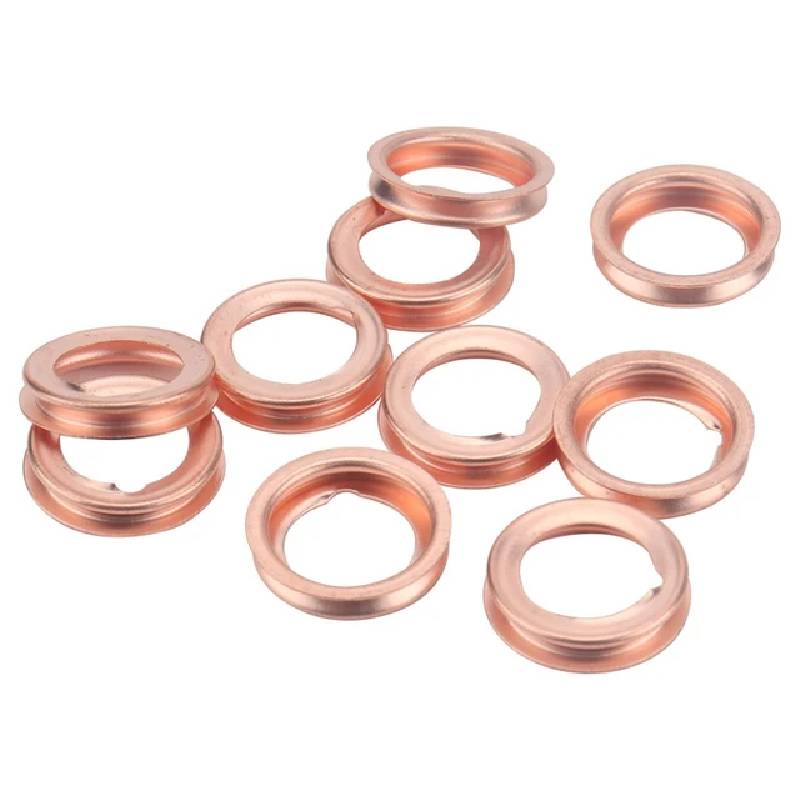Understanding the Functionality and Importance of Shaft Seal Rings in Machinery
Understanding Shaft Seal Rings Essential Components in Machinery
Shaft seal rings play a pivotal role in various mechanical systems, serving as critical components in preventing leaks and ensuring the smooth operation of machinery. These ingenious devices are designed to accommodate the linear or rotary movement of a shaft while maintaining a hermetic seal around it, thereby preventing the escape of lubricants, fluids, or gases from the system.
The Importance of Shaft Seal Rings
In many industrial applications, the effective closure of a shaft is vital for optimal performance and longevity of machinery. Shaft seal rings are used in a diverse array of equipment, including pumps, motors, gearboxes, and compressors. Their primary function is to seal the junction where the shaft penetrates the housing, a point often vulnerable to leakage and contamination. This not only preserves the integrity of the fluids within the system, but also protects the mechanical components from external debris and moisture.
Types of Shaft Seal Rings
Shaft seal rings come in various shapes, materials, and designs to suit specific applications
. The most common types include1. Radial Lip Seals These are the most prevalent type of shaft seal, featuring a flexible lip that conforms to the surface of the shaft. They can effectively seal against both liquids and gases and are often used in automotive and industrial applications.
2. Mechanical Seals These provide a more robust sealing solution, utilizing multiple components including rotary and stationary faces to create a sealed environment. Mechanical seals are commonly used in high-pressure and high-temperature applications, such as in pump systems.
3. O-Rings While not a seal ring in the traditional sense, O-rings can serve a similar purpose in some configurations. They are circular rings made from elastomer materials and are used in conjunction with grooves in machinery to create tight seals.
shaft seal ring

4. V-Rings These seals can be mounted on the shaft and provide sealing against dirt, dust, and moisture, making them suitable for applications where external contamination is a concern.
Each type has its specific advantages and is selected based on the conditions of the application, including pressure, temperature, and type of fluid being sealed.
Material Selection
The materials used for shaft seal rings are just as varied as the designs. The selection of material is crucial as it impacts the seal’s performance, durability, and compatibility with the fluids being sealed. Common materials include
- Nitrile Rubber (NBR) Known for its oil resistance, NBR is widely used in automotive and industrial applications. - Fluoroelastomer (FKM) This material can withstand high temperatures and aggressive chemical environments, making it suitable for harsh industrial applications. - Polyurethane Often chosen for its abrasion resistance, polyurethane seals are used in applications where wear is a significant concern. - PTFE (Teflon) This high-performance material is resistant to high temperatures and most chemicals, making it ideal for specialized applications.
Maintenance and Replacement
Regular inspection and maintenance of shaft seal rings are vital to ensure optimal performance. Over time, seals can wear out due to friction, environmental exposure, and improper installation. Signs of seal failure include fluid leaks, increased noise, or vibrations. Routine maintenance checks can prevent more significant issues, save costs on repairs, and enhance the efficiency of machinery.
In conclusion, shaft seal rings are essential components that facilitate the reliable operation of various mechanical systems. By providing effective sealing solutions, they protect vital fluids, enhance the longevity of machinery, and contribute to the overall efficiency and safety of industrial operations. As technology advances, the design and materials of these seals will continue to evolve, further optimizing their performance in an ever-expanding range of applications. Understanding their importance and maintenance needs is crucial for anyone involved in machinery operation and maintenance.
-
Understanding Automotive Oil Seals: Essential Components for Engine and Shaft Protection
News Jul.30,2025
-
The Importance of Heavy Duty Seals in Industrial and Residential Applications
News Jul.30,2025
-
Exploring Industrial Oil Seals: From Felt Oil Seals to TTO and CFW Solutions
News Jul.30,2025
-
Essential Guide to Oil Seals: From Radial to Metal-Cased Seals for Industrial Reliability
News Jul.30,2025
-
Choosing the Right Oil Seals and Gaskets for Industrial and Automotive Applications
News Jul.30,2025
-
Cassette Seals: Durable Sealing Solutions for Harsh Environments
News Jul.30,2025
-
Understanding the Front Main Engine Seal: Purpose, Maintenance, and Installation
News Jul.29,2025
Products categories















